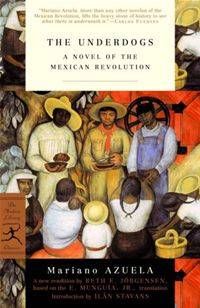
[North] American Literature[s]: Historical Fiction

But. Y’know, we do need to talk a little about what’s going on above and below you. Because there’s some *awesome* writing coming out of Canada and Mexico, and if you don’t know where to look then you don’t always have a lot of access to those stories. So here at Book Riot, Cassandra Neace and I are going to spend some time telling you about what is going on in the literary scene in America’s Hat and New Mexico Sr. in our new monthly feature, “[North] American Literature[s].” Each month, we’ll tackle a theme common in Canadian and Mexican Literature and suggest one book from each literature for you to check out.
We’re both pretty passionate about these literatures (we done did schoolin’ in these areas and everything!), and we hope you will be too! For April, our theme is historical fiction. So let’s dig in!
Canadians love historical fiction. We just love it. Some people think of CanLit and historical fiction as being somewhat synonymous. Our major awards, like the Giller and the Governor General’s Award and the popular national book battle Canada Reads, all frequently feature historical fiction. There are lots of reasons for this. Canada is urbanizing rapidly, and there is some comfort and nostalgia in tales set before the hustle and bustle of urbanization. Canadians also seem to be unflinchingly interested in dark chapters from our history; titles like Kiss of the Fur Queen, which dealt with the horrors and aftermath of the residential school system (what you folks called Indian Schools in the US), and Book of Negroes, which dealt with slavery within and without Canadian borders, have been hugely successful and widely-read texts. But historical fiction of all kinds tends to be successful in Canada, from epic, sweeping narratives of nation building to small, focused examinations of the individual in the historical moment.

Now, over to Cassandra, who will talk Mexico:
Mexico as a country is going through an identity crisis. They have been trying to figure out who they are since Hernán Cortés first showed up in the 1500s and changed all the rules. It’s his fault. In 1810, they finally managed to shake loose of Spain, but by then the European influence was so strong that it caused a lot of internal turmoil. In 1910, that turmoil boiled over into a (roughly) decade-long conflict that we call the “Mexican Revolution.” What is most interesting about this conflict, at least from a literary standpoint, is the amount of amazing writing that was done during and about those years.

And it’s available for free from Project Gutenberg. That makes it worth a look, right?
We hope you’ve enjoyed this first edition of [North] American Literature[s]. We’ll be back next month to look at female desire. (Hot!)











